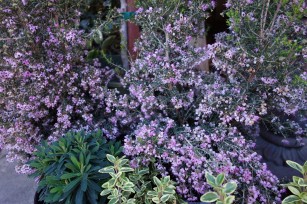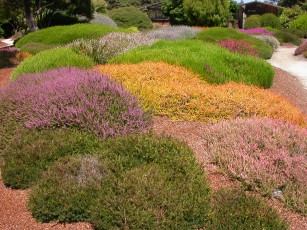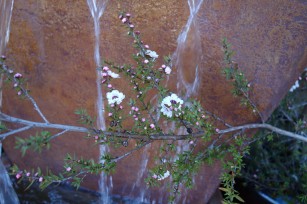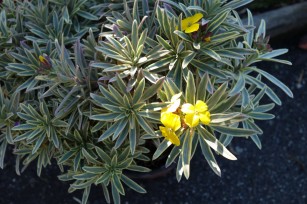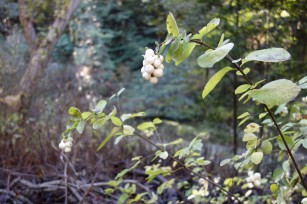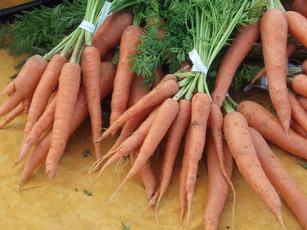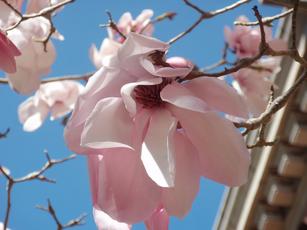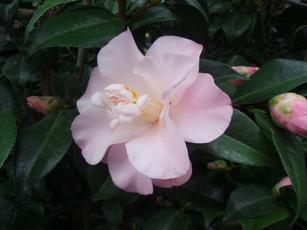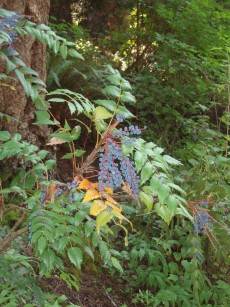 There's no way around it. January may signal the start of the new year but most of our plants still have the day off. I need inspiration on these cold mornings when most of my plants are asleep. This is the time of year when it's doubly important to include plants in your garden that can take a licking, keep on ticking and provide some much needed food for our feathered friends.
There's no way around it. January may signal the start of the new year but most of our plants still have the day off. I need inspiration on these cold mornings when most of my plants are asleep. This is the time of year when it's doubly important to include plants in your garden that can take a licking, keep on ticking and provide some much needed food for our feathered friends.
During the winter small songbirds and hummingbirds face big challenges, too. Just like us, they need to keep warm. Our fuel might be a comfort food like hot stew, theirs are foods rich in antioxidants and fats or high octane nectar. Native shrubs with berries or nectar at this time of year will benefit them as well as providing hardy winter color in your garden.
Small flocks of Chestnut-backed chickadees frequent my garden regularly. I can hear their familiar chattering from quite a distance. I read in Audubon magazine that they weigh about as much as a dozen paperclips but their bodies are large for their mass. They have to ramp up the number of hours they devote to feeding. At night chickadees cram themselves into tiny cavities and shiver, burning the day's fuel to keep from freezing.
Other birds that I enjoy in my garden at this time of year are Lesser goldfinches, Townsend warblers, Ruby-Crowned kinglets, robins, brown creepers, Hutton's vireo, Dark-eyed juncos and Anna's hummingbirds. These native plants will make both of you happy and it's not too late to plant.
Mahonia (Berberis aquifolium) is one of my favorites for winter color and spring berries. Fat cluster of golden yellow flowers light up the Douglas fir woodland understory. In the garden it has a surprising level of adaptability to tough conditions including low water, not-so-great soil and shade or partial sun. In the barberry family, they have gorgeous prickly foliage and powdery-blue, then black berries that the birds devour in late winter and early spring. Hummingbirds rely on the flowers as a source of nectar-rich food in wintertime when there isn't much else around. I saw them visiting these beautiful flower spikes in Seattle recently at Chihuly Glass Exhibit (got the spelling right this time). There are many cultivars of mahonia now available and they are all great.
Common Snowberry (Symphoricarpus albus) is a native that starts its show in fall. It thrives in a woodland garden or in the dry shade under oak trees. A background plant most of the year, the white berries on thie 4-foot shrub stand out when the leaves drop. Seldom troubled by pests this small shrub can be used to control erosion and is deer resistant. Beautiful ornamental white fruits cover the plant at this time of year and are valued by varied thrush, robins and quail.
Hairy honeysuckle (Lonicera hispidula) can provide both berries and nectar for local birds. Large, pink nectar-rich blossoms give way to red juicy berries in the fall and often hang on the vines during the winter. They are relished by birds. By pruning them a bit to get more branching they'll be denser and flower more. It's as deer proof as they come. They do well in clay soil in full sun and also shade. Snowberry, Hummingbird sage, toyon and coffeeberry are other natives that complement them.
Toyon (Heteromeles arbutifolia) is the official shrub of the State of California. Also called the Christmas berry shrub it's common in chaparral and open wooded forest. Many birds enjoy their bright red berries throughout the winter including cedar waxwing, bushtit, warblers, robins, flickers, finches and sparrows. Toyon make a good screen as well as a beautiful specimen plant. They are drought tolerant when established but tolerate some water in the garden if drainage is good. They are relatively fire resistant, like full sun but will tolerate shade. They adapt to sand, clay or serpentine soils. Butterflies also are attracted to the flowers in the summer.
These are just a few great natives to plant in your garden. Other native plants for the winter garden are Pacific wax myrtle, Strawberry tree and Red-twig dogwood.
By choosing plants that are native to our region birds spend less energy and time foraging for food as they more easily recognize them as a food source. You can have your beautiful berries and color and the birds can eat them, too.

